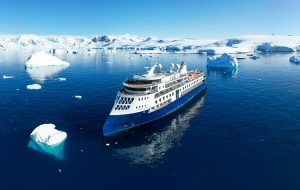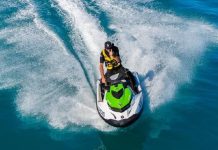
In an age where travel feels so far away, certain airports around the world are starting to gear up with travel post pandemic.
Hong Kong International Airport has taken a step into the world of future travel, where several self-driving robots will cruise around the terminal to clean public areas and passengers to stop the spread of coronavirus.
Developed in Hong Kong, the Airport Authority Hong Kong (AAHK) said their airport is the first in the world to use the sterilisation robots, which will roam around and sanitise various areas, including toilets.
According to the BBC, these robots can sterilise up to 99.99 per cent of bacteria and virus in the air and on object surfaces in just 10 minutes.
The robots use ultraviolet lighting which destroys bacteria and other harmful microbes by damaging their DNA which stops them from multiplying.
In addition to the robots, the airport claims to have the first ‘full-body disinfection booth’ which sees those passing through undertake a temperature check and a 40-second disinfection and sanitising procedure, according to CNN.
Called CLeanTech, the cubicle – which doesn’t look much bigger than a phone booth – has an antimicrobial coating that is able to kill any viruses and bacteria on clothing and the body. The facility sprinkles disinfectant on the passenger inside the booth, which is kept under negative pressure to stop cross-contamination.
The system, which aims to disinfect clothing and skin, isn’t equipt to detect whether someone is already infected by the virus without showing symptoms.
Airlines are also upping their cleaning game amid the pandemic.
Southwest Airlines in the US has been testing electrostatic sprayers which will be used to disinfect planes in-between flights.
These particular forms of disinfectant provide a hospital grade clean that not only protect passengers, but also frontline workers.
“The machines we’re testing don’t fog the aircraft. They release a much more direct mist on the surfaces,” senior vice president of Southwest Technical Operations Landon Nitschke said. “They cover much more of the surface than a fogger would.”














